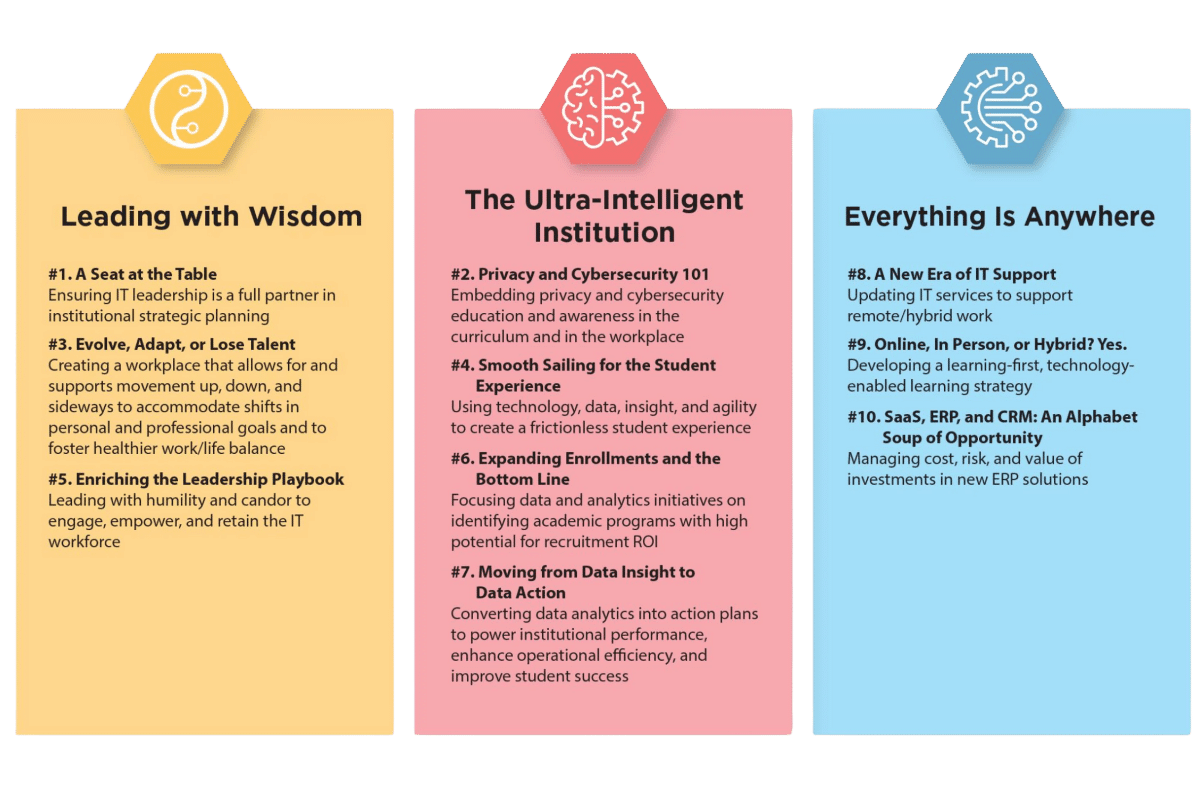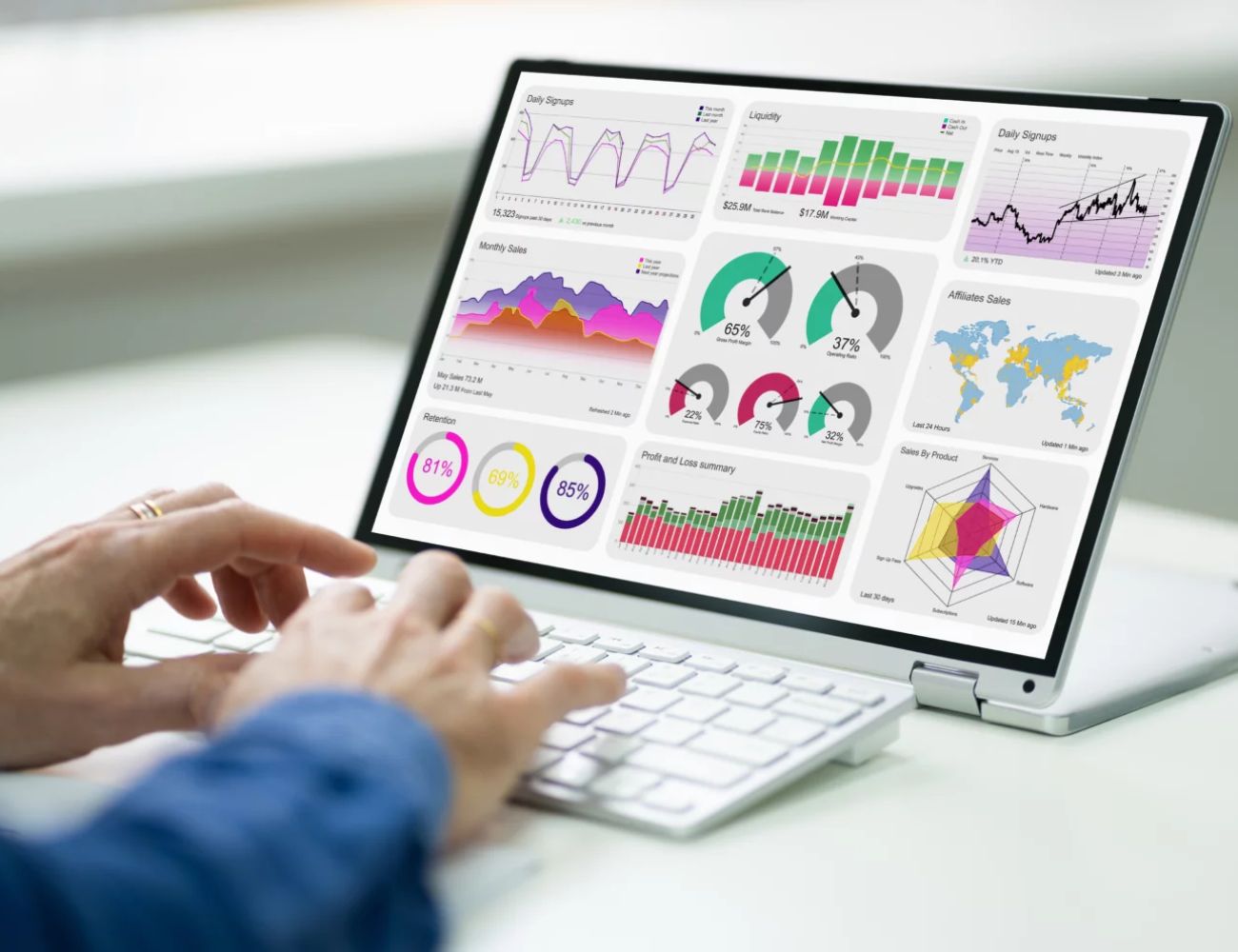Last week members of the SEAtS team attended the 2022 Annual EDUCAUSE Conference in Denver, Colorado. The week produced some great conversations around IT Leadership, using technology to improve the student experience, and converting data analytics into strategic action plans for institutional efficiency. Forming the base of these conversations is EDUCAUSE’s Top 10 IT Issues for Higher Education in 2023.
The Top 10 IT Issues focus on three main categories:
- Leading with Wisdom
- The Ultra-Intelligent Institution
- Everything is Anywhere

Let’s look at some of the key issues in each category.
Leading with Wisdom
A Seat at the Table
One of the key threads of the conference was that technology fuels what Higher Education institutions need to do for the future. Issue #1 highlights that institutional strategic planning is indisputably linked to technology. As a result, integrated IT leadership is now more important than ever. Ensuring that the link between IT leadership and institutional strategic planning is stable and established, will be crucial for institutions going forward.
Evolve, Adapt, or Lose Talent
One of the other key issues surrounding leadership in Higher Education, Issue #3 involves institutional policies and support for their workforce. We already know that HE staff are experiencing their own wellbeing crisis. Without sufficient flexibility and resources in place to reduce workloads and promote a healthier work/life balance, institutions will find themselves fighting to retain staff as well as retaining students. Listening to your workforce will need to be a key priority in 2023.
Without sufficient flexibility and resources in place, institutions will find themselves fighting to retain staff as well as retaining students.
The Ultra-Intelligent Institution
Smooth Sailing for the Student Experience
Here is the category we all sort of knew was coming. The future is digital and the future of Education is no different. Diving right in with Issue #4, it’s the student experience. Recent reports have revealed the student experience is in trouble and have highlighted a massive need for institutions to use technology, data and analytics to make serious improvements.
Institutions have the data necessary to provide the personalized and flexible experience students want, however many still don’t have the tools and resources needed to act. With largely siloed student data, institutions have been unable to provide the right support to the right students, for the best experience. Technology that supports hybrid learning, student engagement analytics, early warning systems for staff, and student case management, ensures this support is timely, accurate, and effective.
Moving from Data Insights to Data Action
Very much connected to the issues in student experience, Issue #7 covers the need for a data informed, institution-wide strategic plan. Firstly, the priority is connecting campus systems to transform student and campus data into actionable insights. Then, it’s using these insights to support purposeful campuswide change, drive institutional efficiency and improve student success. This covers everything from informed student retention strategies, support programs, space and resource utilisation, energy conservation, sustainability and more.
Without the technology to connect campus systems and siloed data, or the analytics to produce the actionable insights, many institutions are still shooting in the dark.

Everything is Anywhere
Online, In-Person, or Hybrid? Yes
Finally, our last category really covers the major changes institutions have gone through in the last few years. The initial need and subsequent demand for a flexible, digital model of teaching and learning has transformed the HE landscape. Despite recent transformations, students are saying their digital experience in Higher Ed simply isn’t good enough. Regardless of whether their learning is online, in-person, or hybrid.
As a result, it’s clear that institutions have more work to do adapting their strategies to successfully support technology-enabled learning. This places even more importance on using data to improve student experiences and success outcomes, and enhance operational efficiency. Whether it be student engagement data, real-time campus footfall or room occupancy data. Without it, your learning strategy is already behind.








